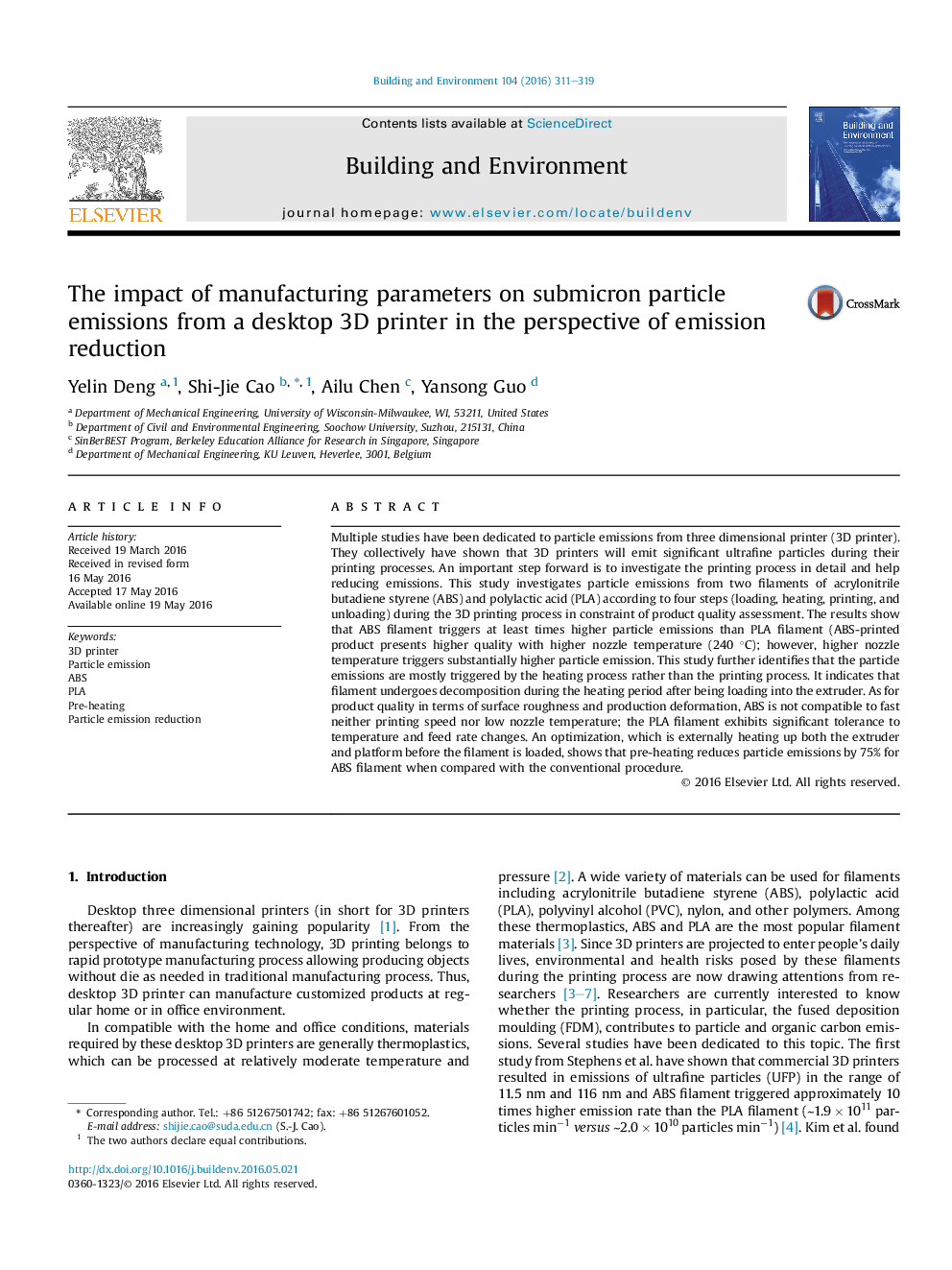| Article ID | Journal | Published Year | Pages | File Type |
|---|---|---|---|---|
| 6699231 | Building and Environment | 2016 | 9 Pages |
Abstract
Multiple studies have been dedicated to particle emissions from three dimensional printer (3D printer). They collectively have shown that 3D printers will emit significant ultrafine particles during their printing processes. An important step forward is to investigate the printing process in detail and help reducing emissions. This study investigates particle emissions from two filaments of acrylonitrile butadiene styrene (ABS) and polylactic acid (PLA) according to four steps (loading, heating, printing, and unloading) during the 3D printing process in constraint of product quality assessment. The results show that ABS filament triggers at least times higher particle emissions than PLA filament (ABS-printed product presents higher quality with higher nozzle temperature (240 °C); however, higher nozzle temperature triggers substantially higher particle emission. This study further identifies that the particle emissions are mostly triggered by the heating process rather than the printing process. It indicates that filament undergoes decomposition during the heating period after being loading into the extruder. As for product quality in terms of surface roughness and production deformation, ABS is not compatible to fast neither printing speed nor low nozzle temperature; the PLA filament exhibits significant tolerance to temperature and feed rate changes. An optimization, which is externally heating up both the extruder and platform before the filament is loaded, shows that pre-heating reduces particle emissions by 75% for ABS filament when compared with the conventional procedure.
Related Topics
Physical Sciences and Engineering
Energy
Renewable Energy, Sustainability and the Environment
Authors
Yelin Deng, Shi-Jie Cao, Ailu Chen, Yansong Guo,
